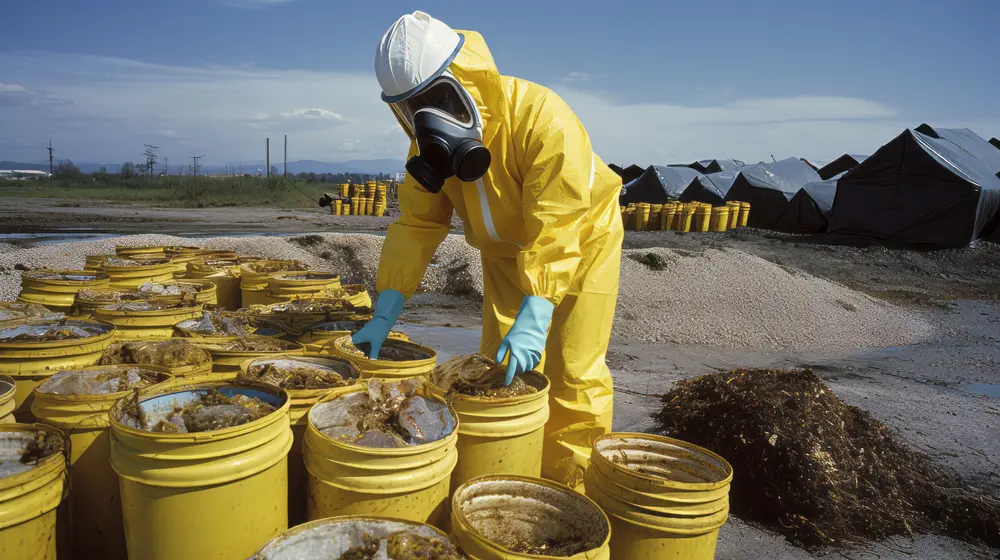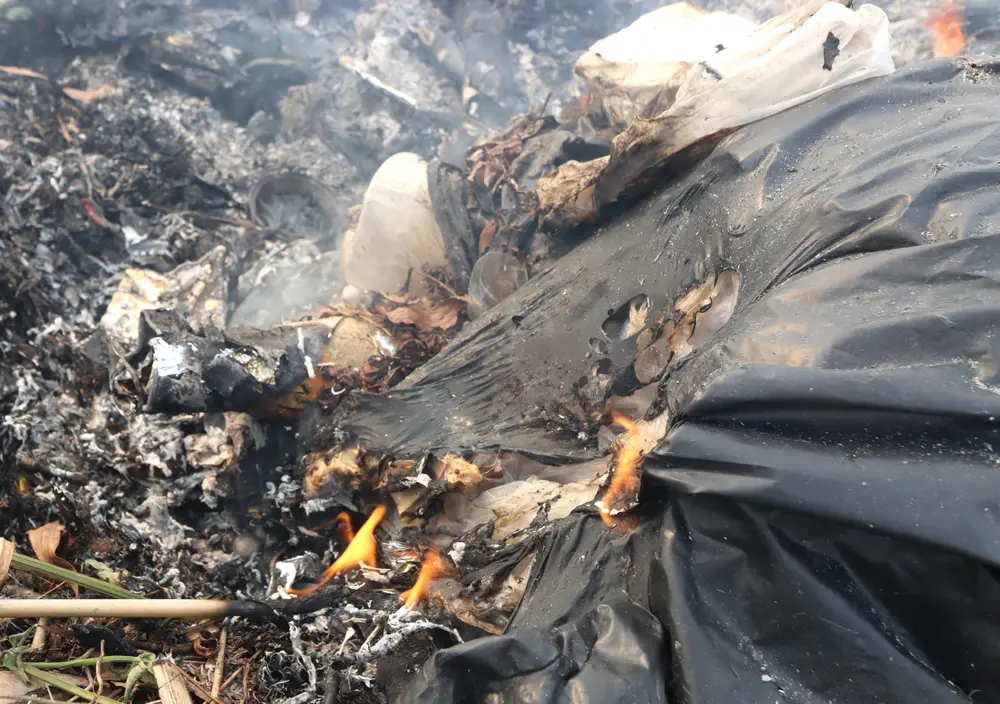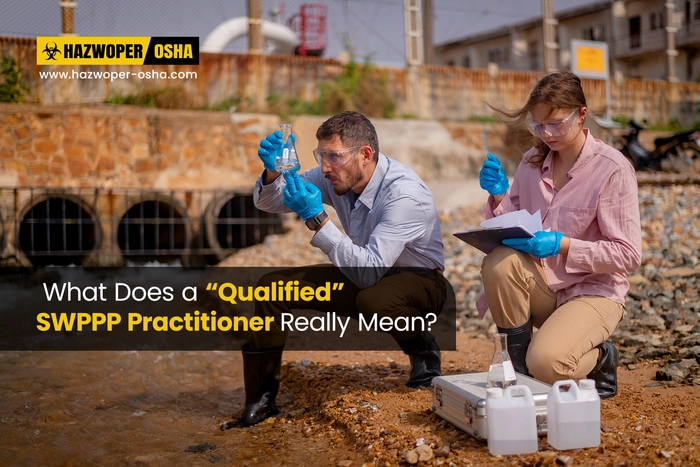Environmental Sustainability and Hazardous Waste Management; Two sides of the same Coin
Annually, the world generates between 7 to 10 billion tons of waste, which includes approximately 300 to 500 million tons of hazardous waste (HW) – characterized by its explosive, flammable, toxic, corrosive, and biological risks, equating to almost 13 tons per second. Approximately 10% of this hazardous waste is traded through the global waste network known as the World-Wide Waste Web (W4).
Hazardous wastes can cause substantial harm to both human health and the environment. Environmental sustainability and Hazardous Waste management are two sides of the same coin, as one cannot exist without the other. In simple words, environmental sustainability refers to the responsible use of resources to ensure their availability for future generations. On the other hand, Hazardous Waste management focuses on the safe and environmentally sound handling of hazardous materials to prevent harm to human health and the environment.
In recent decades, waste management has emerged as a critical environmental concern. The escalation of waste due to population growth, industrial expansion, and urban development directly impacts the environment. The escalation of waste correlates with population growth, industrial expansion, and urban development. Waste management encompasses the handling of both non-hazardous and Hazardous Waste. While non-hazardous waste poses minimal risk to the environment, Hazardous Waste presents significant threats to public health and ecosystems. The exponential growth of the industrial sector has substantially increased the production of Hazardous Waste. Consequently, meticulous attention, including the integration of our HAZWOPER course on Hazardous Waste Training is imperative in the storage, segregation, transportation, and disposal of hazardous waste to mitigate environmental risks.
The Problem of Hazardous Waste
Hazardous Waste encompasses any waste that presents a threat to human health or the environment due to its toxic, flammable, corrosive, or reactive properties. Examples include industrial waste, medical waste, electronic waste, and household hazardous waste. Historically, hazardous wastes were disposed of through methods like open dumping and burning.
Open Dumping refers to the indiscriminate disposal of waste in uncovered, unprotected areas, such as landfills or open fields, without proper containment or management practices. This practice poses significant environmental risks, particularly in terms of soil and water pollution.

Open Burning and Incineration are methods used for waste disposal that involve combustion of waste materials. While these methods can help reduce the volume of waste, they also release a variety of pollutants into the air, which can have harmful effects on human health and the environment.

Particulates, which are tiny particles suspended in the air, are released. During the combustion process, tiny particles known as particulates, including ash, soot, and other solid residues from incomplete burning, are released into the air. Inhalation of these particulates can lead to respiratory problems, cardiovascular issues, and exacerbation of existing health conditions.
Nitrogen oxides (NOx) and volatile organic compounds (VOCs) are emitted during open burning and incineration. NOx contributes to smog and ground-level ozone, which can harm respiratory health. VOCs from organic matter combustion cause unpleasant odors, affecting nearby communities. Greenhouse gases like carbon dioxide (CO2) released during combustion contribute to climate change. These methods, though offering waste disposal, pose significant environmental and health risks. Implementing recycling, composting, and controlled incineration with emissions controls can mitigate these impacts.
When solid waste is disposed of improperly, whether through open dumping or inadequate landfill management, it can lead to the exacerbation of water pollution. This occurs as rainwater infiltrates through the waste layers, picking up various contaminants and pollutants along the way. These contaminants can include heavy metals, organic chemicals, pathogens, and other harmful substances present in the waste materials.
As rainwater percolates through the waste layers, it forms a liquid known as leachate. Leachate is a highly toxic and polluted liquid that carries dissolved contaminants from the waste, creating a potent brew of pollutants. If not properly contained, leachate can seep into the surrounding soil and eventually make its way into groundwater and surface water bodies, such as streams, rivers, and lakes.
Once in the waterways, leachate can have devastating effects on aquatic ecosystems and public health. It can contaminate drinking water sources, making them unsafe for consumption and posing serious health risks to humans and wildlife. Additionally, the presence of pollutants in surface waters can harm aquatic organisms, disrupt ecosystems, and impair water quality, leading to declines in biodiversity and ecological health.
Furthermore, the release of nutrients from decomposing organic waste in the leachate can trigger eutrophication, a process where excessive nutrient levels stimulate algal growth. This algal bloom can deplete oxygen levels in the water, leading to the death of fish and other aquatic organisms in a phenomenon known as hypoxia.
Overall, the residues from solid waste disposal contribute significantly to water pollution, posing threats to human health, aquatic life, and the environment at large. Proper waste management practices, including the containment and treatment of leachate, are essential to prevent further degradation of water quality and protect freshwater resources for present and future generations.
Therefore, improper management of hazardous waste can result in serious consequences.
The Role of Sustainable Waste Management
In the realm of sustainable waste management, the article 'Overview of RCRA Online Training' offers extensive insights into the laws and regulations governed by the U.S. Environmental Protection Agency (EPA) for the proper management of hazardous and non-hazardous solid waste. This resource equips individuals with comprehensive information essential for implementing sustainable waste management practices, which encompass various strategies aimed at minimizing the generation of Hazardous Waste and ensuring its safe handling. These practices include:
Waste Prevention: Reducing the amount of waste generated at the source is the most effective way to minimize the impact of hazardous waste. This can be achieved through practices such as using less packaging, choosing reusable products, and designing products for durability and recyclability. Additionally, individuals can play a crucial role by reducing consumption, making mindful purchases, and avoiding impulse buying.
Reuse and Recycling: Reusing and recycling materials can help to divert them from landfills and incineration, and conserve resources. For example, used oil can be re-refined into new oil, and plastic bottles can be recycled into new plastic products. Embracing reusable products like shopping bags and water bottles, as well as actively participating in recycling and composting programs, significantly contributes to waste reduction efforts.
Treatment and Disposal: When waste cannot be prevented, reused, or recycled, it must be treated and disposed of in a safe and environmentally sound manner. This may involve high-temperature incineration, chemical treatment, or landfilling in secure facilities. It's essential to support businesses committed to sustainability and advocate for responsible waste management practices within our communities by getting involved in organizations promoting environmental sustainability and hazardous waste management.
Together, these actions help foster a culture of sustainability and responsible waste management.
The Benefits of Sustainable Hazardous Waste Management
Sustainable hazardous waste management practices offer a range of benefits, including:
- Protection of Human Health and the Environment: By reducing the generation of hazardous waste and managing it safely, we can protect human health and the environment from harm.
- Conservation of Resources: Sustainable waste management practices can help to conserve resources, such as water, energy, and raw materials.
- Economic Benefits: Sustainable waste management can create jobs and stimulate economic growth.
Environmental sustainability and hazardous waste management are essential for protecting our planet and ensuring a healthy future for all. By adopting sustainable waste management practices, we can reduce the generation of hazardous waste, manage it safely, and conserve resources for future generations.

 EN |
EN |  ES
ES






























































































































